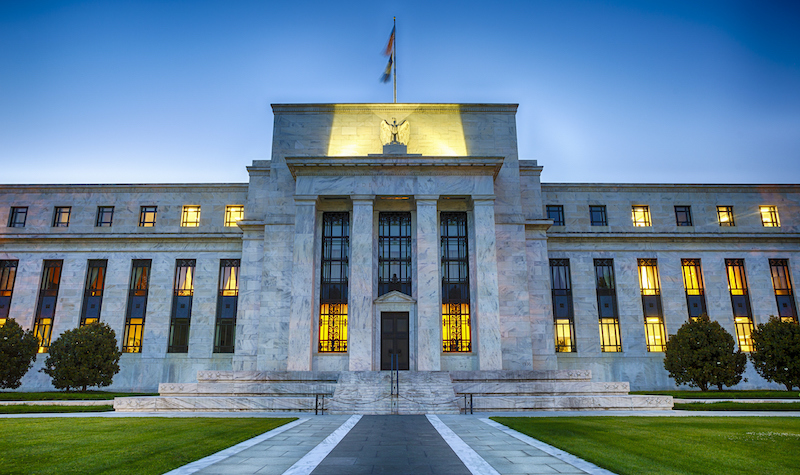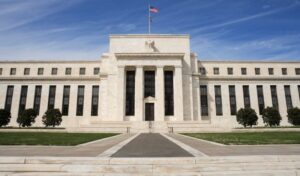
A new oversight agency should monitor the Federal Reserve’s efforts to reduce racial inequality.
In a speech delivered in August as part of the annual Federal Reserve meeting in Jackson Hole, Wyoming, Chairman Jerome H. Powell announced a major new policy. Instead of continuing to bow to inflation hawks who have dominated Federal Open Market Committee (FOMC) ratemaking in recent years, the Fed is adopting what has been dubbed a “lower-for-longer” approach. Essentially, policymakers will attempt to accelerate job growth by tolerating faster price growth. This policy will be reevaluated every five years to consider its effectiveness.
Two aspects of this announcement stand out.
First, Chairman Powell acknowledged that the Fed has the power to influence inequality. The Chairman noted that before the COVID-19 pandemic, “Black and Hispanic unemployment rates reached record lows, and the differentials between these rates and the white unemployment rate narrowed to their lowest levels on record.”
Second, change is coming to the Fed—the agency would just prefer to decide which changes to make, and when, thank you very much.
Enter congressional Democrats. In August, U.S. Senator Elizabeth Warren (D-Mass.) and 24 co-sponsors introduced the Federal Reserve Racial and Economic Equity Act (FRREE Act). The FRREE Act would fundamentally alter the Fed’s mandate, requiring the FOMC “to minimize and eliminate racial disparities in employment, wages, wealth, and access to affordable credit.”
Rather than having a supposedly colorblind and narrow emphasis on employment, prices, and support for big banks, this new legislation would demand more from the world’s most powerful committee. The revised Fed mandate would force the FOMC to prioritize Black and brown communities as it considers policies to spur the economy. The Chairman would not be allowed simply to rescue banks and wait years for the effects to trickle down. Under Senator Warren’s approach, the Fed would base every decision on its trickle-up impact, especially across racial lines.
This begs the question: If the Fed were to be required to reduce the racial wealth gap, how would policymakers and the public judge its performance? Indeed, critics of the Democrats’ legislation highlight that the FRREE Act does not actually define these disparities, whereas the metrics used to measure the Fed’s current mandate are straightforward and readily available. Under the existing system, federal agencies, including the U.S. Department of Labor and U.S. Department of Commerce, produce extensive economic data and publish reports regularly. The data are then widely distributed, making the Fed’s report cards objective and transparent to the public.
But the latest reports do not look great for Chairman Powell, with data reflecting what some strategists are calling a “K-shaped” economy. That is, those at the top continue seeing their fortunes rise, while families at the bottom fall further behind.
Consider a recent display of this rich-get-richer, poor-get-poorer dichotomy. Fans of the stock market, such as President Donald J. Trump, cheered as the Nasdaq and other indexes recorded new highs. Meanwhile, the Labor Department published a monthly employment report, offering a sobering assessment of the jobs market. The U.S. Bureau of Labor Statistics announced a topline unemployment rate of 8.4 percent, counting 11 million fewer workers than when the pandemic began. In August alone, an alarming 534,000 Americans were added to the rolls of “permanent job losers.”
To combat these labor market woes, the Fed is trying to stimulate price increases by tempting borrowers with historically low interest rates. Although the FOMC’s benchmark rate now stands near zero, inflation has averaged just 1.6 percent. It is clear that the Fed can and must do more to fulfill its dual mandate—especially the federal mandate to keep unemployment below 3 percent.
Yet these policies have not succeeded in pushing prices higher, raising wages, and increasing demand for workers. This dismal track record makes it obvious why policymakers are rethinking the institution’s priorities. That includes Chairman Powell, who said the new lower-for-longer policy “emphasizes that maximum employment is a broad-based and inclusive goal.”
Still, how can the Fed satisfy critics’ demand for objective measures of its progress? The FOMC may have a newfound emphasis on inclusivity, but there are only a handful of quantifiable measures of the racial wealth gap buried within the retrospective data mentioned above.
For example, breaking down the jobless rate further, the unemployment rate for Black people is at present more than 75 percent higher than the comparable rate for white people. Both groups have been adding jobs in recent months, but the jobless rate for whites has come down much faster. This disparity has fluctuated over time, but for as long as the government has been measuring joblessness, white people have been much more likely to find employment. This only scratches the surface of the racial economic gap, but it plainly shows that the existing Fed directive has only perpetuated inequality in this country.
If the Fed becomes responsible for closing the racial wealth gap under the FRREE Act, however, this broader mandate will require forward-looking metrics that gauge more than the employment divide. Under this new approach, the Fed would need to weigh prospective policies based on how they might affect relative wage growth. Will the lower-for-longer initiative fill Black bank accounts? Or mostly white 401(k)s? What credit facilities will help the families in Kenosha, Wisconsin and not just the ones with accounts in the Cayman Islands?
This expanded Federal Reserve mission would require a robust evaluation of the multifaceted impact of its policies, specifically how the Fed is driving the racial wealth gap. I have suggested elsewhere that a cross-agency metric of the effects of federal policy on the racial wealth gap could lead to appropriate outcome-oriented measures and cross-agency coordination. Such a cross-agency metric could be done in conjunction with the proposed FRREE Act mandates, with members of the FOMC commissioning reports. The existing federal administrative state has a number of institutional homes where this analysis might logically fit, such as the Minority Business Development Agency.
To close the racial wealth gap, we must first measure how the wealth gap persists through and across federal regulatory and legislative programs.
Inspired by the Congressional Budget Office (CBO), a federal agency could measure or “score” each statute, legislation, or regulatory action based on its effects on racial economic outcomes. The measurement or score would be coupled with each proposal so that regulators, the public, and Congress can be mindful of policy outcomes. Then, in addition to this initial score, a CBO-like score for racial equity must also measure the ongoing impact of policies on the racial wealth gap. For example, tax programs like the Mortgage Interest Tax Deduction and Opportunity Zones, the Federal Reserve’s monetary policy, and other programs in progress should be scored when possible based on available data.
Created by the Congressional Budget and Impoundment Control Act of 1974, the CBO is tasked with analyzing congressional bills and agency programs, scoring each bill, and providing formal cost estimates. The CBO publishes projections “that are based on the assumption that current laws about federal spending and revenues will generally remain in place.” These baseline estimates are compared against alternative projections the CBO develops, which incorporate changes that might result from various congressional proposals. Reports from the CBO ultimately provide decision-makers with a nonpartisan assessment that can be used when considering policies that affect public finances and the economy.
The CBO scores have been thought to be influential because the agency is recognized for its independence and neutrality. This is no accident. The CBO was launched toward the end of the contentious Nixon Administration by legislators seeking budget and spending oversight. At the time, the White House had substantial control over fiscal procedures through its Office of Management and Budget (OMB). Lawmakers accused OMB of bias and became frustrated by the executive branch’s refusal to appropriate funds. The U.S. Congress’s “power of the purse” was being undermined, and Congress responded with the 1974 law that overhauled the entire budget and spending operation. The House and Senate budget committees were formed, and powers that Congress had cast away were firmly reeled back.
Along these lines, a similar oversight agency can be devised to score each federal initiative based upon the expected impact on racial wealth gaps. While granting new responsibilities to the FOMC, Congress can maintain its grasp by establishing an independent arbiter. Closing racial disparities would be a specific regulatory goal, with this new measurement informing how policy decisions affect racial equity. The Fed and other agencies would have discretion to create programs or responses within its domain, but voters and policymakers would have substantially greater insight into the connection between monetary policy and racial inequality.
With the Democrats’ unveiling of the FRREE Act coming just weeks ahead of Chairman Powell’s announcement at Jackson Hole, Wyoming, it is highly likely that the lower-for-longer policy is the Fed’s shallow attempt to appease progressives on Capitol Hill. The Chairman may be sending a message that he sees the racial wealth gap, and FOMC is trying to respond. Presumably, Senator Warren and her co-sponsors will not find this response sufficient. Even centrist presidential frontrunner, former Vice President Joe Biden, is calling for the Fed to target racial gaps “aggressively.” Chairman Powell and FOMC may need to start preparing a more comprehensive plan.
C. Dylan Durham is a law student at the University of California, Irvine School of Law.
This essay is part of a series entitled Racism, Regulation, and the Administrative State.




